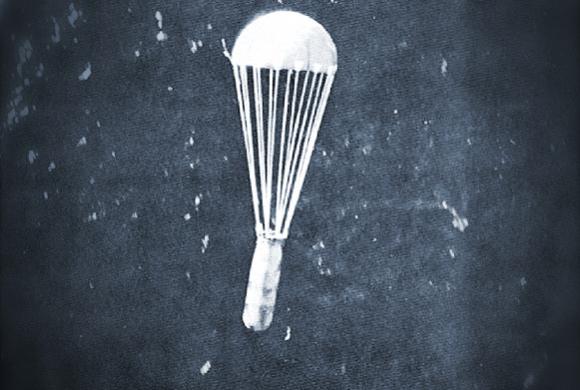In the final stages of the Pacific War, American military strategists ingeniously combined two weapon systems, the B-29 long-range bomber and naval mines to devastate the Japanese economy and Japanese morale. Many think that, had it not been for the times involved, only the latter would have been enough to avoid the use of atomic bombs on Hiroshima and Nagasaki. The operation of laying thousands of mines in the Pacific was called not by chance Operation Starvation (Operation "Hunger").
The effectiveness of these silent and treacherous weapons, mistakenly underestimated in the planning rooms of the General Staff, was also demonstrated in the Cold War.
A striking event occurred during the Korean War, when mines laid by North Korea in Wonsan Bay delayed the landing of US forces which would have shortened a war that turned out to be bloody and painful for the population. The ancient means available proved to be inadequate, from a qualitative and quantitative point of view, to operate in such a scenario. As a result, the imperviousness of the minefields, with over 2.000 Russian-made mines (albeit dating back to the First World War), resulted in an eight-day delay in landing.
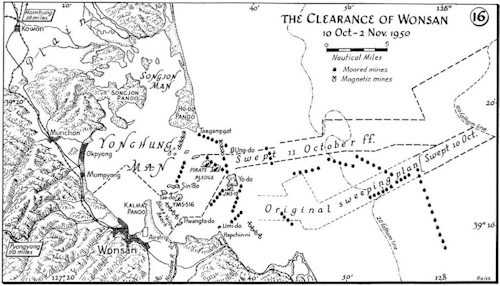 Strategically it was a disaster because it allowed the retreat of the North Korean forces causing General McArthur's encirclement plan to fail.
Strategically it was a disaster because it allowed the retreat of the North Korean forces causing General McArthur's encirclement plan to fail.
The Commander of the Far Eastern Naval Forces, Admiral Turner, declared that the major lesson learned during this operation was that the War of Mine, considered by many a form of secondary combat, had proved decisive and in the future should not be more bound to a secondary role. The echoes of Wonsan's failure caused the Chief of Naval Operations (CNO), Admiral Sherman, to declare that: "When you can't go where you want to, when you want to, you haven't got command of sea… ". An important statement that was soon forgotten, however. More recently, the 1984 blockade of the Suez Canal and the August mines released at Hormuz to disrupt merchant traffic from the Persian Gulf drew attention to this threat. These events should have created a more conscious mindset in the Marines about the risk associated with these lethal and inexpensive weapons, but again this did not happen.
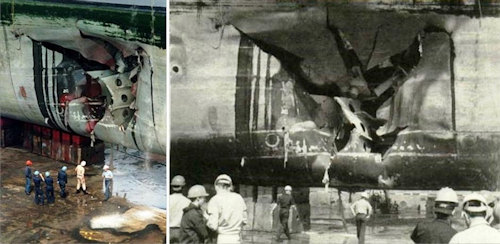
Damage to the USS Tripoli
During the Gulf War, two US Navy ships, the USS Tripoli (photo) and the USS Princeton, were both severely damaged by Iraqi mines (not particularly sophisticated among other things).
Although many Western Marines developed the lessons learned in NATO, the financial commitment to acquire new systems was intermittent and the threat of sea mines, although responsible for the largest number of sinkings in the history of the past three centuries, are still not evaluated in the priorities. navies as they should. Questionable assessment considering that in recent years the areas of maritime instability in sensitive areas for commercial traffic have increased, which may lead to the use of underwater devices even by parts of non-regular factions (see image below).
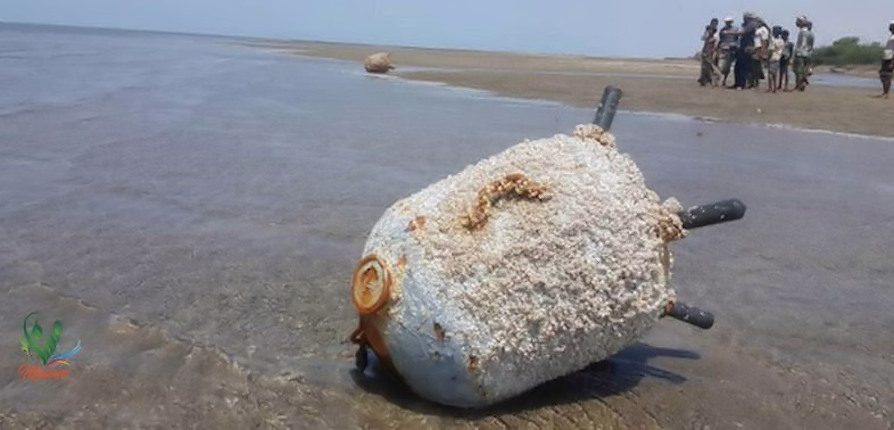
(Recent example of the homemade mines made by the Houthis in the Bab al Mandab strait)
Use of naval mines in a hypothetical future eastern scenario
A threat that requires investing in new mine countermeasure systems employed by dedicated and trained personnel. While some Marines in the West concentrate their few resources on offshore units, other "emerging" countries are investing in the field of mine warfare. For example, Russia, Korea and China see this threat as an attractive alternative in the event of a crisis, with both deterrent and offensive functions.
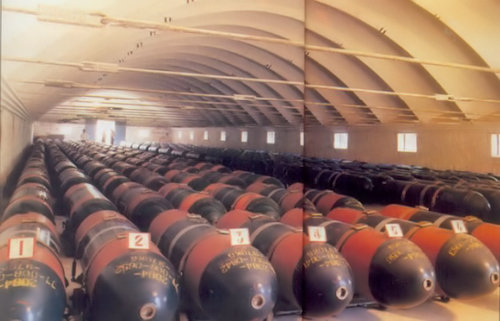 Today we face a hypothetical case of a future military confrontation between China and the United States. In the Chinese conception of naval warfare, naval mines are of great importance. It is no coincidence that the modern Red Dragon submarines can be equipped with modern systems for the occult laying of mines that have increased the payload of these devices by double. Although the Chinese Navy could reach a worrying offensive level in the coming years, thanks to the construction of more and more modern naval and underwater units, a naval confrontation would be unlikely. On the contrary, the use of interference or coercion with hidden means such as naval mines appears more feasible.
Today we face a hypothetical case of a future military confrontation between China and the United States. In the Chinese conception of naval warfare, naval mines are of great importance. It is no coincidence that the modern Red Dragon submarines can be equipped with modern systems for the occult laying of mines that have increased the payload of these devices by double. Although the Chinese Navy could reach a worrying offensive level in the coming years, thanks to the construction of more and more modern naval and underwater units, a naval confrontation would be unlikely. On the contrary, the use of interference or coercion with hidden means such as naval mines appears more feasible.
The ease of laying naval mines in a covert way would allow the Chinese to hit the "soft rib" of America with the strategy of "破 交" [attack transport hubs], or to ban trade routes essential for economic survival. A submarine could covertly release a minefield with over 50 mines, causing sensitive ports and sea routes to close for a long time.
Let's not talk about science fiction, open sources report this use in modern times: in Vietnam in Haiphong Bay in 1973 or during the CIA's covert operations in Nicaragua in 1984 which saw the first unconventional naval use of rudimentary devices, what we now call IED.
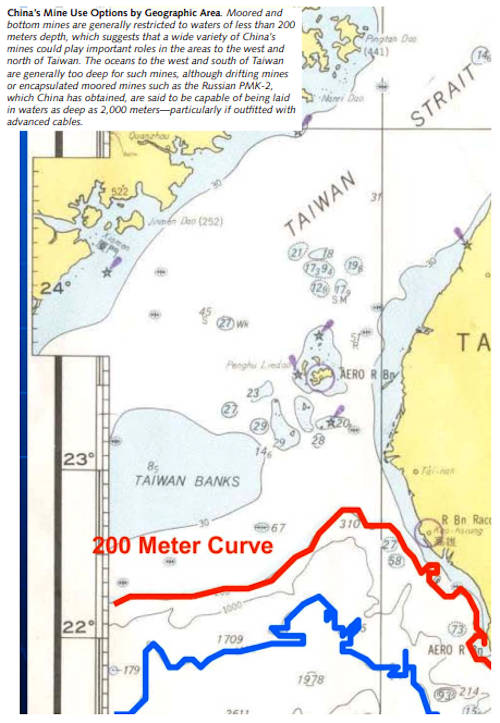
The sting of the Chinese scorpion
Chinese leaders have realized that China can never become a maritime power until it is able to defend its sovereignty in its maritime interests, managing what it calls "containment from the sea".
In the August 2015 issue of the naval magazine 现代 舰船 (Modern Ships) an article was quoted from the Chinese National Defense University, which proposed a Chinese blockade of Taiwan using naval mines. The Chinese plan envisaged a first phase lasting 4-6 days with the use of 5.000-7.000 mines, followed by a second phase with the laying of an additional 7.000, again released by naval and air vehicles. "... in order to block foreign enemy intervention, Chinese ships, submarines and some fishing vessels would need to lay a certain amount of sea mines in critical sea passages of the first island chain."
For those wishing to learn more, the potential of the Chinese mine war forces is widely described in the report of the US Naval College "Chinese Mine Warfare: A PLA Navy 'Assassin Assassin's Mace' Capability of 2009, which denounced that already at the time the Chinese navy it could count on over 100.000 mines.
From an oceanographic point of view, the South China Sea lends itself particularly to the laying of minefields thanks to its relatively shallow seabed, and allows the interdiction of choke points and the interdiction of large areas of geopolitical interest (along the 9 dash line). The threat of naval mines in the eastern seas is therefore highly probable.
To counter a possible threat of this type, it will be necessary to undertake new programs for the development of means for mine countermeasures. This is particularly needed by the US Navy, if only to protect future naval strategic assets that could reach 308 ships in 2021 with a peak of around 313 ships in 2025.
The new US Navy policy
I remember that the new US shipbuilding policy actually goes against the previous Defense policies, always very “land centric” and wait-and-see. The concept of global maritime power requires adequate means redeployed throughout the oceans which the United States has neglected, in terms of efficiency and training, in recent decades with ever less attention to the needs of the Fleet to favor land and aeronautical needs. not always justifiable. This policy, which perhaps reached its apotheosis with Obama, actually led to the decay of the fleet.
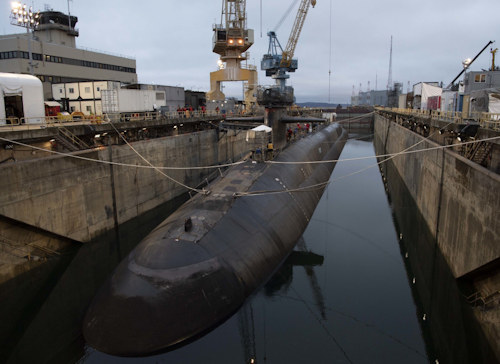
The situation began to change with Trump, who restarted shipbuilding as a top priority to continue to "provide the measure of safety and projection maritime power required by naval forces in the decades to come."
Biden appears to agree on this line, and has approved Defense Secretary Lloyd Austin's plans for "Review both the Future Naval Force Study and the shipbuilding plan in detail and work with the Navy leadership to develop a well-balanced shipbuilding plan", also expanding the details to better evaluate "the future risks in carrying out assigned missions and in supporting the requirements of the joint force and working with the leadership of the Navy to address those dangers".
In a nutshell, the Austin guidelines want to push the US Navy to undergo a large-scale modernization and overhaul of the fleet's structure and platforms, which will need "new concepts and capabilities for countering China across the spectrum of conflict; updating the position of US forces in the region, including through the Pacific Deterrence Initiative and strengthening our alliances and partnerships".
An absolutely far-sighted vision which, however, does not address the core of the problem, namely the need for adequate funds to ensure the renewal of the fleet, ideally lighter, with fewer aircraft carriers and combat units (cruisers and destroyers) in favor of smaller, multi-role unmanned ships. and flexible and with a significant growth of the submarine attack fleet. Of course this costs a lot and in an America that, like the rest of the world (except perhaps China), is not yet out of Covid, there are other emerging priorities.
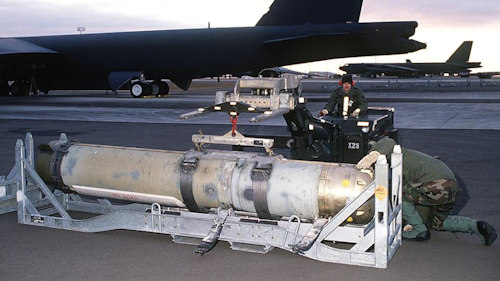 Minewarfare III millennium
Minewarfare III millennium
In a world scenario that is not simple, which will see in the next 30 years a struggle for the dominance of the seas with more and more actors, the mine war will certainly return to vogue.
All the Marines are investing in new and sophisticated underwater weapons, which can also be used from small platforms, and in new systems to counter them.
The question we will try to answer is what are the US Navy's programs to counter the mine threat in the eastern seas.
In the offensive field, the US Navy is developing new naval anti-submarine barrage mines (Hammerhead1), replacing the old Mk 60 Captor2 (photo), and the necessary hidden installation systems (alternative to traditional ones).
These new weapons could be strategically placed in sensitive areas by fully autonomous vehicles such as the Orca (XLUUV), which is expected to be in service by 2022, and the Snakehead Large Diameter UUV in 2023.
The Orca XLUUV has a payload of eight tons and will be able to lay numerous naval mines in a single mission. These mines, once laid, will be able to communicate with each other through Wave Gliders, unmanned underwater vehicles that have an almost unlimited duration and could provide the possibility of communicating via satellite even with minefields with Hammerhead.
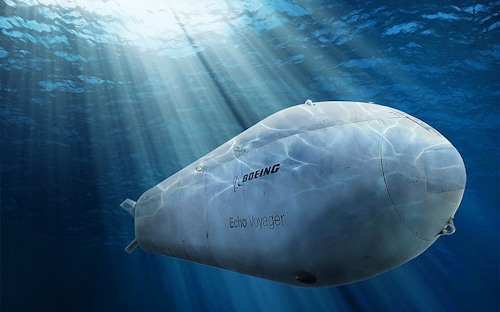
According to the US Navy, the future of mine counter measures could be the use of complex unmanned systems (operating in three dimensions), managed outside the minefield via satellite communications and sophisticated sensors.
The US Navy focuses on MCM3 (photo below).
Although the development of the Common Unmanned Surface Vehicle (CUSV) is largely complete, the integration of mine clearance equipment on the CUSV is still ongoing. How much this can limit Chinese expansion in the Pacific and Indian is to be seen because of the political implications that would arise from the use of these weapons. It is however interesting to note that this form of war, neglected for a long time, is also reassuming its importance in the United States precisely due to the deterrence characteristic obtainable with a relatively limited effort in waters of great strategic interest.
In summary, naval mines in the near future will continue to be highly cost effective strategic weapons, capable of limiting the movements of opponents in an increasingly complex scenario, where the players in the game will have to compete for the supremacy of the sea to ensure trafficking. of goods vital to their survival. Surely the oceans will once again be the protagonists of the future of humanity.
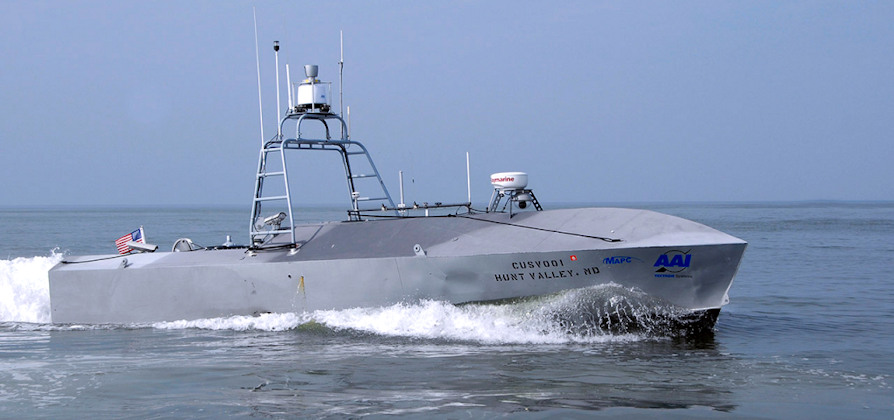
1 The Hammerhead system consists of several modules. Starting from the bottom we have the mooring module that keeps it anchored to the seabed; the energy module provides power and the sensing module is a sonar device for detecting the presence of ships or submarines in the vicinity. It follows the concept of the Mk 60 Captor, using a modified version of the Mark 54 Lightweight torpedo, but it is likely that the command and control system will add superior management capacity, using UUV systems as relays.
2 The Mk 60 Captor mines were the only deep-sea antisubmarine mines in the world, used exclusively by the United States Navy during the Cold War to counter Soviet submarines. The laying of the mine was carried out by helicopters, airplanes, ships and submarines. The maximum declared operational depth was about 900 meters, with a maximum range of about 7200 meters. In practice, the mine consisted of a launch tube that contained a modified Mark 46 torpedo with an acoustic search head, the battery, the acoustic sensors with the processor unit and the anchor cable.
3 MCM Common Unmanned Surface Vehicle is the multi-role system chosen by the United States Department of Defense for both the discovery and neutralization of naval mines and intelligence, surveillance and reconnaissance (ISR).
Photo: USAF / web / US Navy / Boeing / US DoD

